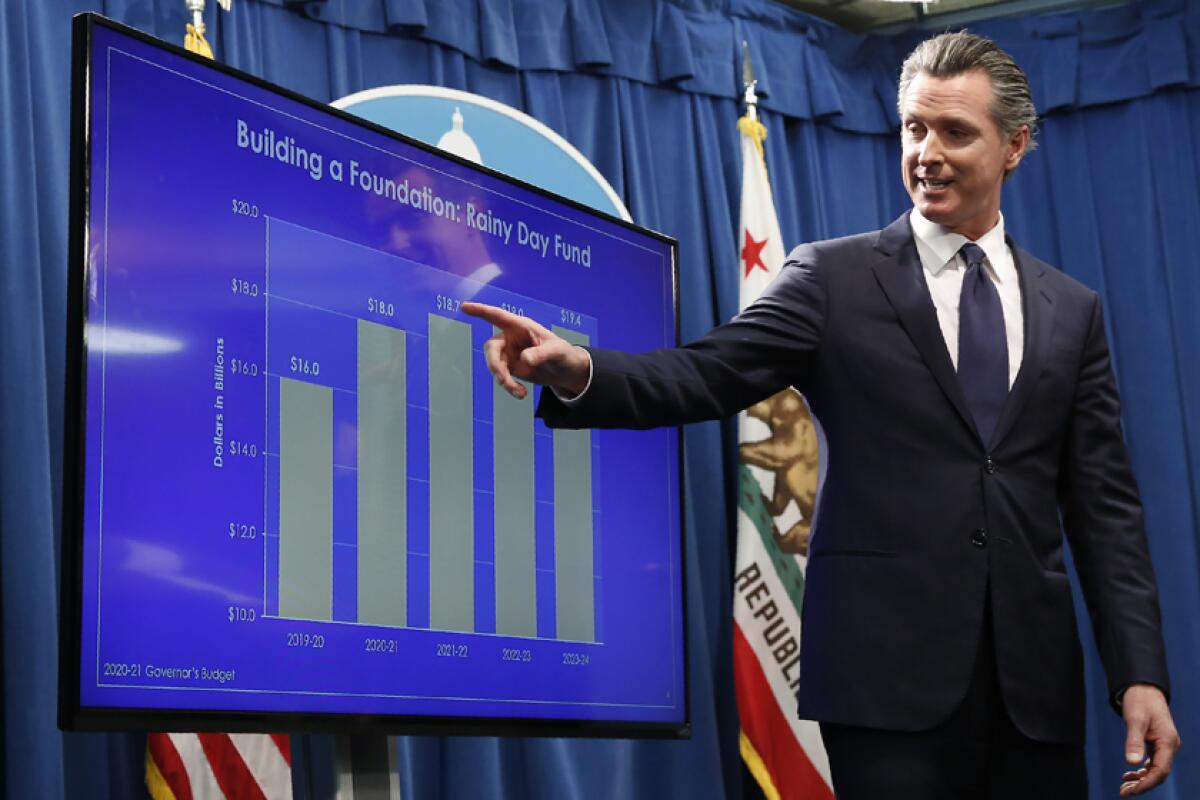Spend or save? What California and its cities should do with billions in federal relief

- Share via
For months, communities across the country have been preparing for the worst. The pandemic shutdowns hit local governments hard, drying up revenue from taxes on sales, business receipts and tourism. Many cities were planning or had enacted furloughs, layoffs, service cuts and other painful penny-pinching measures to close budget deficits.
Not anymore. The $1.9-trillion relief package signed by President Biden on Thursday includes $350 billion in aid for states and local governments, on top of the billions allocated for schools, transit agencies, health departments and “critical” state and tribal infrastructure projects. That money is supposed to be used to replace lost revenue and restore services. In many cases, the relief will exceed the deficits.
Now, once financially floundering cities and states will actually be flush with cash. Suddenly difficult decisions over what services and personnel to cut to balance budgets will become fights over how to spend this largesse. (The law does not allow the aid to be spent on pensions or tax cuts.) After so many months of belt-tightening and mounting expenses, this is a good problem to have. In fact, Biden hadn’t even signed the bill this week before advocacy groups began calling on elected leaders to start the spending spree.
It’s tempting to do so, especially when the numbers are so big. In total, California will get $42 billion — including $16 billion that will be divided among local governments.
Los Angeles is due to receive $1.35 billion. Mayor Eric Garcetti said the city can eliminate its $750-million budget gap, restore services and sock away more funds for the next economic downturn. Even after its bills are paid and reserves full again, L.A. may still have a couple hundred million dollars left over to spend.
California’s state government may be the biggest winner in the relief bill. Unlike other states, California has a large budget surplus this year because its tax structure relies heavily on high-income residents, who have continued to prosper despite the pandemic restrictions. That means Gov. Gavin Newsom and lawmakers will have lots of money to spend this year.
So what should cities and the state do with their windfall?
First, this is one-time money, and it should be used for one-time expenditures. The fact is, we still don’t know when the pandemic will end and how long it will take for communities and the economy to bounce back. It behooves lawmakers to first get their fiscal houses in order and be cautious about future budgets.
Second, this is pandemic relief aid. COVID-19 has exposed the fault lines and inequities baked into our cities and state. To the greatest extent possible, the money should be used to lessen those inequities and help communities hardest hit by the pandemic emerge stronger and better supported. For example, the rise of remote work and distance learning has exposed the gaps in access to high-quality internet service. The state could use some of the money to expand connectivity and computer literacy in low-income and rural communities.
Third, the funding could be spent preparing for the next disaster. As we emerge from this public health emergency, there is surely another emergency around the corner — and it’s probably going to be connected to climate change, be it wildfires, flooding or drought. California has a tremendous backlog of infrastructure and environmental work to do to make the state more resilient to climate change and extreme weather. These are projects that get pushed off because they are expensive and rarely a top priority.
For months, GOP leaders successfully blocked efforts to provide federal aid for cities and states, arguing it would be a blue-state bailout. That ignored how the pandemic was forcing local governments across the country to cut jobs and curtail spending, which undermined the economic recovery. The relief bill may overcompensate, but that’s OK. This is the moment to invest in communities and rebuild.
More to Read
A cure for the common opinion
Get thought-provoking perspectives with our weekly newsletter.
You may occasionally receive promotional content from the Los Angeles Times.









